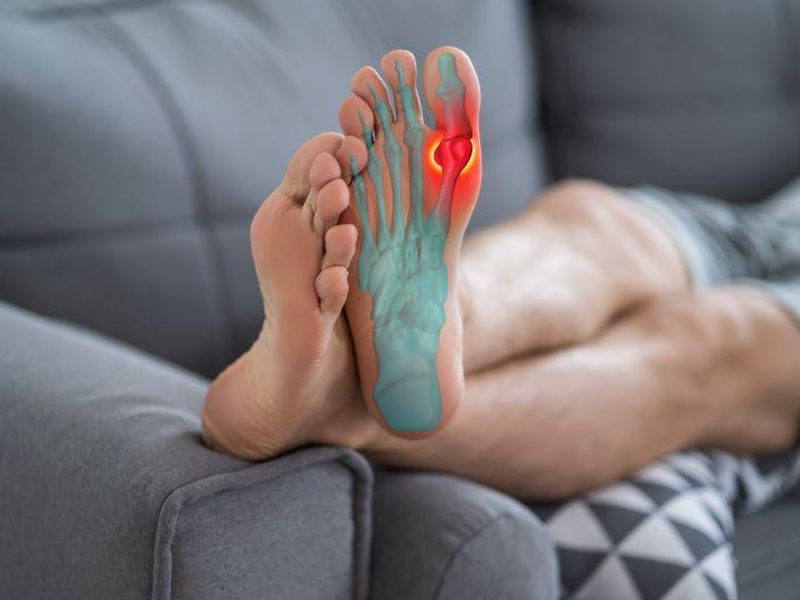Racial disparities in gout may be explained by differences in diet, social determinants of health, and chronic kidney disease
TUESDAY, Aug. 16, 2022 (HealthDay News) — Gout is more prevalent in adults self-reporting Black versus White race, but these differences are attenuated after full adjustment for all risk factors, according to a study published online Aug. 15 in JAMA Network Open.
Natalie McCormick, Ph.D., from Massachusetts General Hospital in Boston, and colleagues examined sex-specific factors driving disparities between Black and White adults in contemporary gout prevalence in the general population in the United States using data from the National Health and Nutrition Examination Survey from 2007 to 2016. Data were included for 18,693 participants, including 3,304 Black women, 6,195 White women, 3,085 Black men, and 6,109 White men.
The researchers found that the age-standardized prevalence of gout was 3.5 and 2.0 percent in Black and White women, respectively, and 7.0 and 5.4 percent, respectively, in Black and White men (age-adjusted odds ratios, 1.81 [95 percent confidence interval, 1.29 to 2.53] and 1.26 [95 percent confidence interval, 1.02 to 1.55], respectively). After adjustment for poverty, diet, body mass index, and chronic kidney disease (CKD) among women and for diet and CKD among men, the associations were attenuated, and they became null after adjustment for all risk factors (age-adjusted odds ratios, 1.05 [95 percent confidence interval, 0.67 to 1.65) and 1.05 [95 percent confidence interval, 0.80 to 1.35] among women and men, respectively). The end point findings for hyperuricemia were similar.
“Culturally informed interventions designed to address adiposity and kidney disease and improve diet quality while recognizing the role of poverty in gout among women could help reduce these disparities,” the authors write.
Several authors disclosed financial ties to the biopharmaceutical industry.
Copyright © 2022 HealthDay. All rights reserved.








